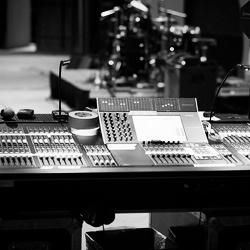Through my trips with a traveling music ministry, I’ve worked in many different churches across the country.
That has given me the opportunity to work closely with many music pastors, church sound staff members and volunteers, and I have one pet peeve about those individuals—they are often exceedingly ignorant of the equipment they work with every week. Hello!!!
My questions about simple things like “what console do you have, how many mic stands do you have” or “which amplifier drives this stage monitor output” were often met with blank stares.
Forget about my problems of interfacing our road gear with the church’s sound system – I’m in awe that they can even get through a single worship service if any technical problem crops up.
So here are my recommendations. These are the basics. This is not difficult.
An entry-level volunteer should know this stuff from memory within a couple of months of serving in the sound team ministry. Knowing this stuff is part of achieving technical excellence in your ministry.
Know Thy Stuff
As a member of your church sound team, you need to make it your business to know all you can about the equipment that you use.
For example, you should know from memory details like: the brand and model of each piece of sound equipment that you use each week (each mic, the console, each stage monitor, what speakers make up the main cluster, etc.).
You should know specifics about those devices. For example, know the polar pattern and bandwidth of each of your mics plus a sense of its frequency response. You need to know how many monitor sends you have available and you should especially know if those are prefade or postfade auxiliary sends.
Learn the dispersion pattern and impedance of each stage monitor, the dispersion pattern and power handling of the devices in your main speaker cluster, etc.).
You should understand the signal flow of your sound system and exactly how the signal is carried from each piece of equipment to the next.
At the very least, you should have these kinds of details written up in a separate document so that when you need to find that kind of information you can quickly locate it, rather than give up out of frustration from trying to dig it out of an equipment manual each time.




















